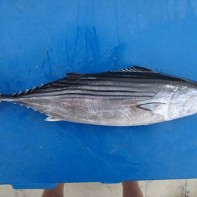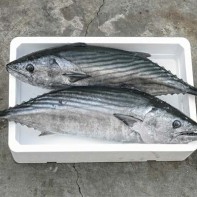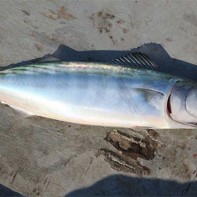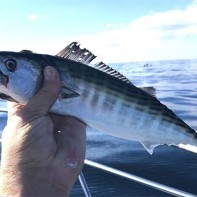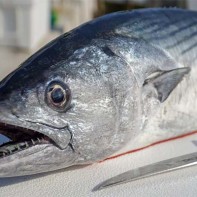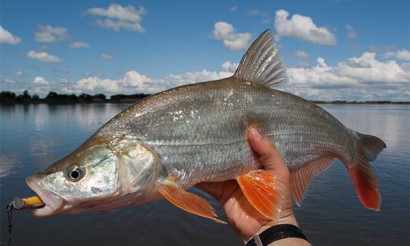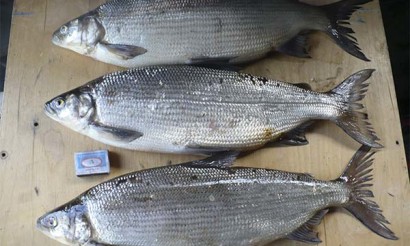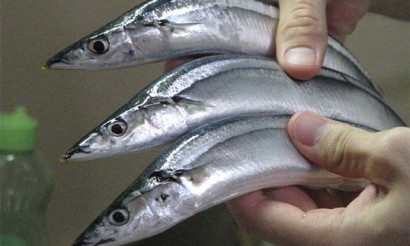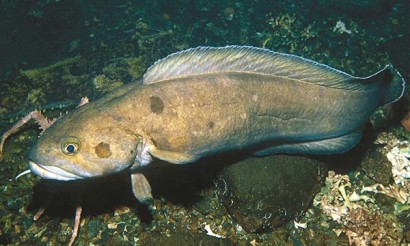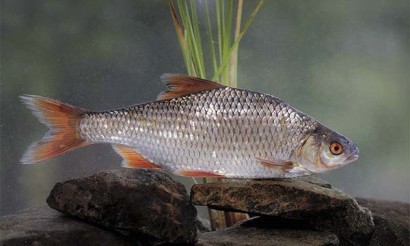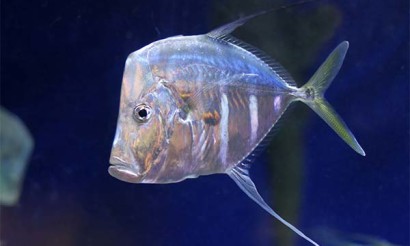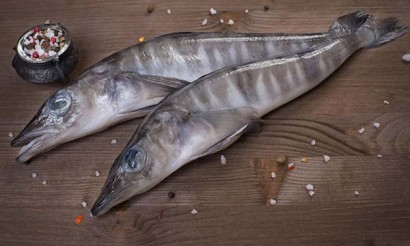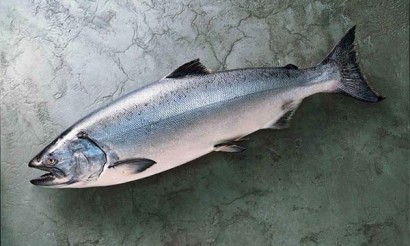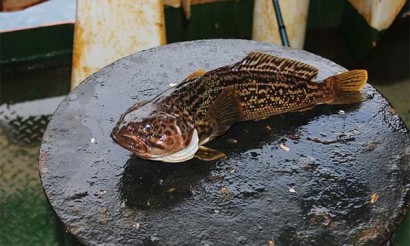Pelamida fish: useful properties and recipes for cooking
Pelamida (bonito) is a commercial fish that belongs to the mackerel family. It got its name due to its great speed, which develops during the moments of hunting for prey. Most of the time members of the mackerel family spend in the upper layers of water. The bonito is a predator that lives in the basins of the Black Sea, the Mediterranean Sea and the Sea of Marmara. It often jumps to the surface when chasing its prey. This fish can be found off the coast of America, Africa and Europe.
- Pelamidae: what kind of fish it is, how it looks and where it is found
- What it looks like
- Where does it live?
- What does it eat?
- Variety
- Reproduction process
- How to catch pelamid: when, where and on what?
- When to catch
- Where to catch
- What to catch
- Composition and calories
- What is the Pelamida Meat Good for?
- Stroganina from pelamida
- What is useful
- Recipe
- Which sauce is good?
- Hazards and contraindications
- Where to buy and how much costs
- How to cook delicious pelamid: Recipes
- In the oven
- In the Pan
- Can I salt it?
- A Q&A
- What does a pelamid taste like?
- Fatty or not?
- Are there many bones in the fish?
- Interesting Facts
Pelamidae: what kind of fish they are, what they look like, and where they live
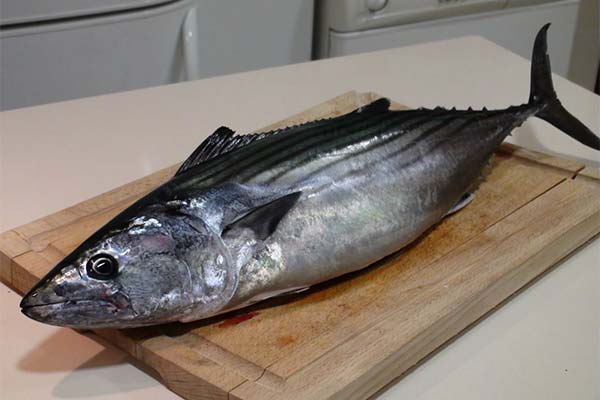
What does it look like?
Pelamida fish reaches 70 centimeters in length. The maximum weight is 9 kg. Its scales have a blue-green coloration. The back has dark gray longitudinal stripes and the sides are covered with silver-colored scales. The body is spindle-shaped and there is a strong and powerful carapace in front. On the back wall barbed fins, which are in the form of rays, spikes. The mouth is quite wide. It has as many as thirty teeth.
Where does it live?
The priority habitat for pelamida is quite warm water. That is why the fish is found on the east and west coast of the Atlantic Ocean. Sample habitats: coast of Norway, southern Africa, the Gulf of Mexico. Pelamida can be found in the Black Sea and the Mediterranean Sea. It mainly swims on the Adriatic coast. The fish has no specific area of distribution, as it coordinates over a huge water area.
What does it feed on?
By its origin, the pelamida is the most true predator. Therefore, it eats its own brethren, such as:
- mackerel;
- Sardine;
- horse mackerel.
In addition to the above-mentioned species, the pelamida feeds on common small gregarious fish. Their type can only depend on the location of the predator. For example, if the pelamida is in the Gulf of Mexico, its main food is invertebrate inhabitants of the water space. Representative of the mackerel family is considered an insatiable fish. Therefore, seventy medium-sized anchovy fish can fit in her belly at the same time.
Varieties of
There are a total of four species of this fish:
- Australian pelamid.
- Chilean (or Californian).
- Pelamida orientalis.
- Atlantic (or Atlantic bonito).
Australian pelamida is found in the Indian and Pacific Ocean, and to be more precise, off the shore of the southeast coast of Australia and New Zealand. It can be up to 1 meter long and weigh 9 kg. This subspecies has a spindle-shaped body, a wide mouth, small conical teeth, and two dorsal fins.
The Chilean pelamid is found in subtropical waters of the Pacific coast. The length of this fish can be 102 centimeters, and its mass reaches 12 kg. This subspecies has: a wide mouth, torpedo-shaped body, teeth on both jaws, two dorsal fins, front carapace and small scales that extend across the body.
The eastern pelamid lives in the warm waters of the Indian and Pacific Oceans. The minimum weight of the fish is 3 kg, length can reach 1 meter. This subspecies has: a large head, a small compressed body, wide mouth, curved teeth, dorsal fins and front carapace.
The Atlantic representative is preferably located in subtropical waters, in the Atlantic Ocean. It can also be found in the Mediterranean and Black Sea. The Bonito reaches 92 centimeters in length and weighs 2 kg. Depending on weather conditions, this subspecies is capable of descending up to 200 meters into deep water. This pelamid has: a wide mouth, a small compressed body, two dorsal fins and a coarse scaly shell.
The breeding process
From June to August, the pelamids undergo the process of mating and fertilization. It is most often during the nighttime that the fish are engaged in the egg-throwing process. The reproductive process consists of several steps.
In addition to excessive voracity, pelamidae have a high level of fecundity. For example, one mature individual is capable of laying about four million eggs. However, of this huge number only half can survive. The little fish grow quickly and gain weight very soon. Already at the age of three months fry reach 0.5 kg.
This species is ready for reproduction only from the age of three years. The life span of this species is approximately 16 years.
How to catch pelamids: when, where and on what?
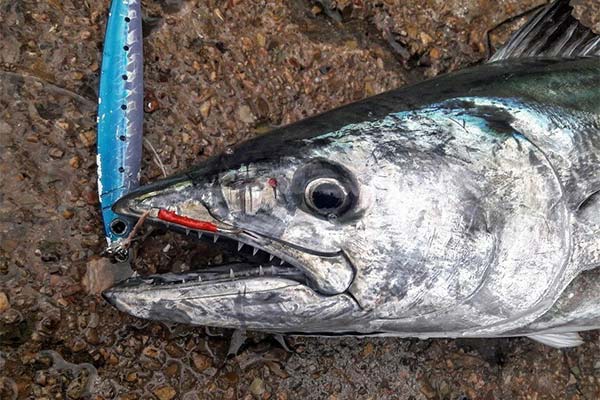
When to Catch
Pelamidae live in the middle layers of water. It can be caught on the Black Sea coast, tentatively in the summer. In winter, this species is deep underwater. The fish is considered a very skilled predator. It hunts while in a flock. Particular attention is paid to the movement on the water surface. This species instantly captures the vibration and smells the bait, even at a great distance. Dynamic pelamid is easy enough to catch, given the fact that in the periods of its hunting, it leaves a visible trace of itself on the upper layer of water.
Where to Catch
This fish can be found most often in temperate, tropical and less often in subtropical waters. Atlantic Pelamidae can be caught in the Mediterranean and Black Sea.
What to catch
There are many options for catching pelamid. Basically, they all have to do with fishing from the shore or in the coastal zone from a boat. The main options for catching this species are considered to be:
- spinning;
- fishing on a jig;
- catching on artificial bait.
You can try to catch fish with an ordinary spinning rod. When choosing a bait, it is necessary to take into account that the size of the tackle should be equal to the size of the prey itself. Fishing, carried out from a sea vessel, is the most favorable. When fishing on the Black Sea coast tackle is not required from the word at all. Most often the fish floats on the water surface. Particular attention should be paid to the fishing technique.
Catching on the jig is considered the oldest and at the same time the most common among anglers. Originally, the use of a rod was not provided at all. On a separate device should be reeled cord, the length of which reaches hundreds of meters. Everything depends only on the depth of fishing. In simplified form, the samodur is equipped with a variety of baits.
Composition and calories
In pelamid approximately 217 calories per 100 grams of product. A representative of the mackerel family is considered a saltwater fish, which allows us to say that it contains a large number of useful nutrients that any human body needs so much. 100 grams of this product contains potassium, phosphorus, calcium, magnesium, iron and iodine. And, most importantly, the fish contains high-quality protein.
What is useful for the meat of the pelamid
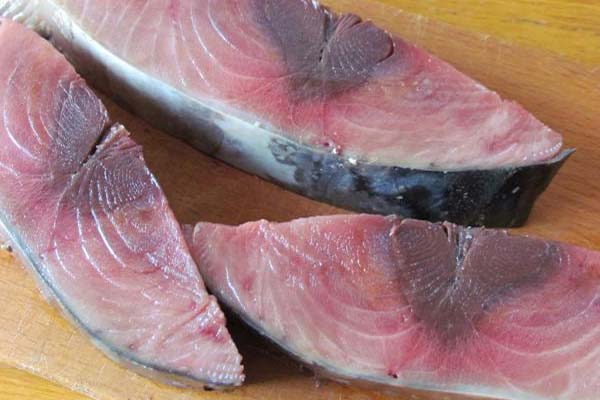
Pelamid meat is able to slow down the premature aging of the body, and at the same time, still improve the metabolic process. It improves vision.
Nutritionists advise to eat this product at least twice a week. The fatty sea fish is rich in essential amino acids omega-3. The consumption of pelamida helps to strengthen the memory and build the nervous system, improve tissue repair and increase muscle mass.
In addition, it can increase hemoglobin levels in the blood and lower cholesterol. A member of the mackerel family also has a positive effect on the thyroid gland, strengthens the bones and joints.
Pelamid stroganina
What is useful for
Stroganina from pelamida is useful because it contains a lot of vitamins A, B, D, E and saturated fatty acids.
Recipe
To prepare the stroganina, it is necessary:
- Chop the onions in thin rings.
- Drizzle them with lemon juice, then add salt, black pepper and a couple of spoons of vegetable oil.
- Pan-fry the black bread on each side.
- Lightly defrost the pelamid and use only light meat in the dish.
- Cut the fillets into cubes.
- Top the fillets with the onions and serve with the croutons.
What sauce is right for this dish?
To make the fish even tastier, you can prepare a sauce to it. The following are great:
- Classic (sea salt and ground black pepper).
- Yakutian (ketchup/tomato paste with garlic and ground pepper).
- Chinese (soy sauce with ginger, garlic, and vinegar).
- Siberian (made from pickled horseradish and mustard).
Harms and contraindications
Despite the great benefits, pelamida has a number of contraindications. Since it is a fatty marine variety, frequent consumption can entail:
- Unstable cardiovascular system.
- Negative effects on the liver and kidneys.
- Weight gain.
It is also important to consider the individual intolerance of certain varieties of fish. For example, people who suffer from hyperthyroidism need to consume this product with great caution.
Where to buy and how much it costs
Pelamida can be purchased in almost any fish department, as it is widely used in cooking. Approximately one kilogram of frozen fish costs around 300 rubles.
How to cook delicious pelamid: recipes
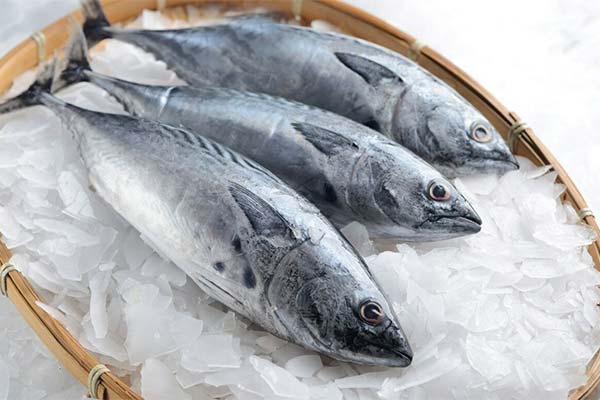
In the oven
Special attention should be paid to fish baked in the oven with sour cream sauce.
The recipe for cooking:
- The first step: you need to cut the pelamida into medium-sized pieces.
- Splash them with lemon juice, sprinkle with Provencal herbs, salt and let them rest for about 15 minutes.
- Place onion on the foil prepared in advance, having cut it into rings. Then put a piece of fish on top and pour the sour cream sauce.
- Send in the oven for 25-30 minutes.
In a pan
Recipe of fish cooked in a pan:
- Prepare the fish fillet for further frying.
- Cut it into medium sized pieces.
- Sprinkle salt and pepper. Leave to rest for 10 minutes.
- Baste each piece of fish fillet in flour and put it on a pan greased with vegetable oil.
- Fry until golden brown.
Can it be salted
Since bonito is a member of the mackerel family, it can also be salted. In order to do this you need to:
- Defrost the fish.
- Remove all the insides and cut the pieces of fillet into two parts.
- Put them evenly in a plastic container.
- Fill the container with previously prepared brine.
- Take it to the fridge for 24 hours.
What you need for pickling:
- sugar;
- salt;
- mustard;
- bay leaves;
- allspice.
Pour everything with boiling water, about 500 ml.
Q&A
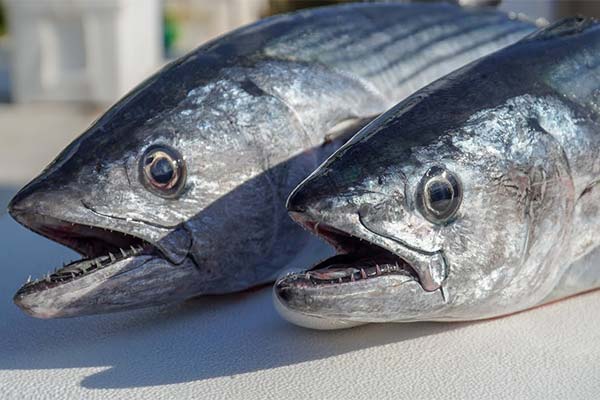
What does pelamid taste like?
The meat of the fish seems fatty and tasty, very similar to tuna meat.
Is it fatty or not?
Definitely, pelamid contains a lot of healthy fat, but along with that, it is entirely lacking in carbohydrates. As mentioned above, bonito is rich in the presence of useful elements. Such fish will be a great option for people who want to maintain their weight.
Are there many bones in fish?
There are relatively few bones in the pelamid, which is certainly a plus for this fish.
Interesting Facts
- Bonito is considered one of the most valuable commercial fish.
- All representatives of the mackerel are good swimmers. In pursuit of their prey, they can reach speeds of up to 80 km/hour.
«Important: All information on this site is provided for informational purposes only. for informational purposes only. Before applying any recommendations, please consult a specialist. specialist before you make use of any of the recommendations. Neither the editors nor the authors shall be liable for any possible harm caused by materials."

